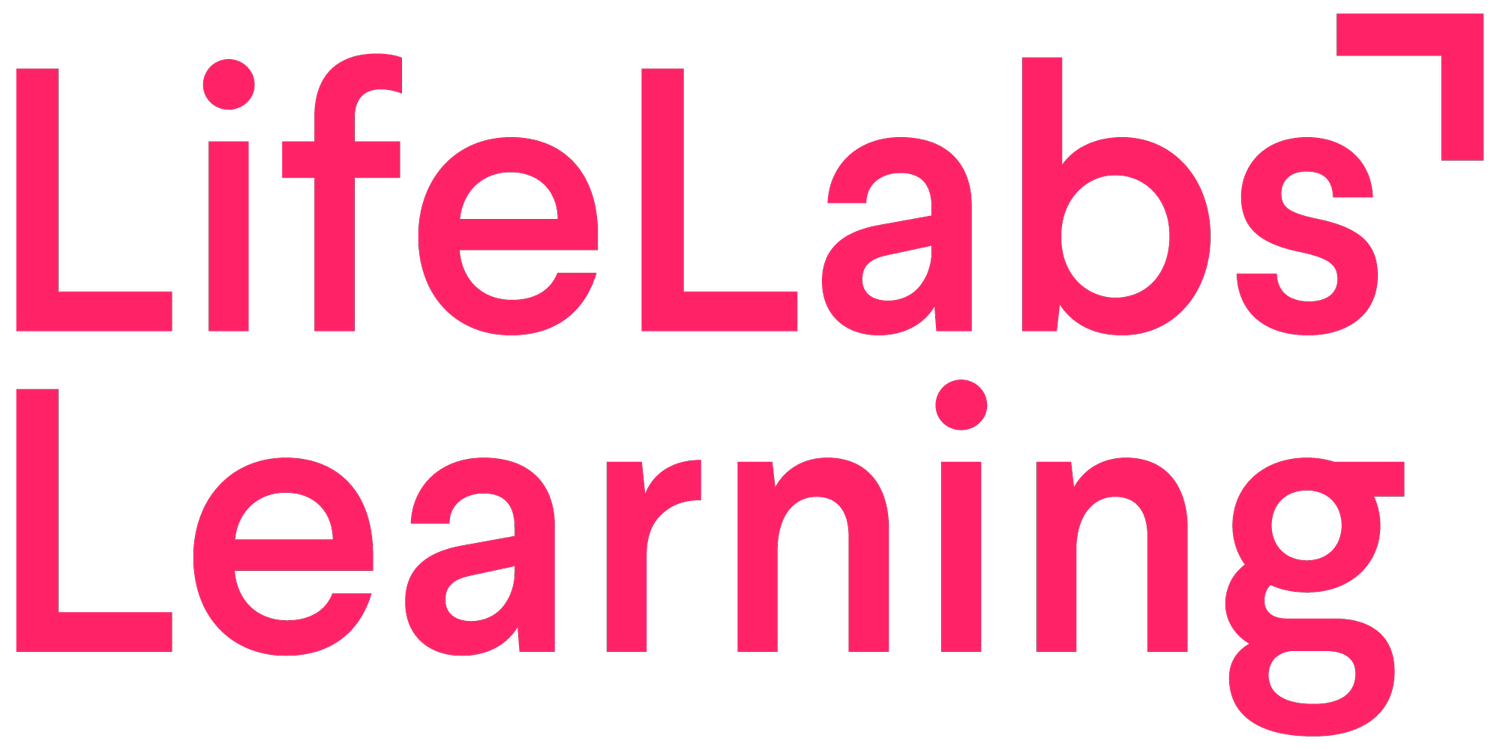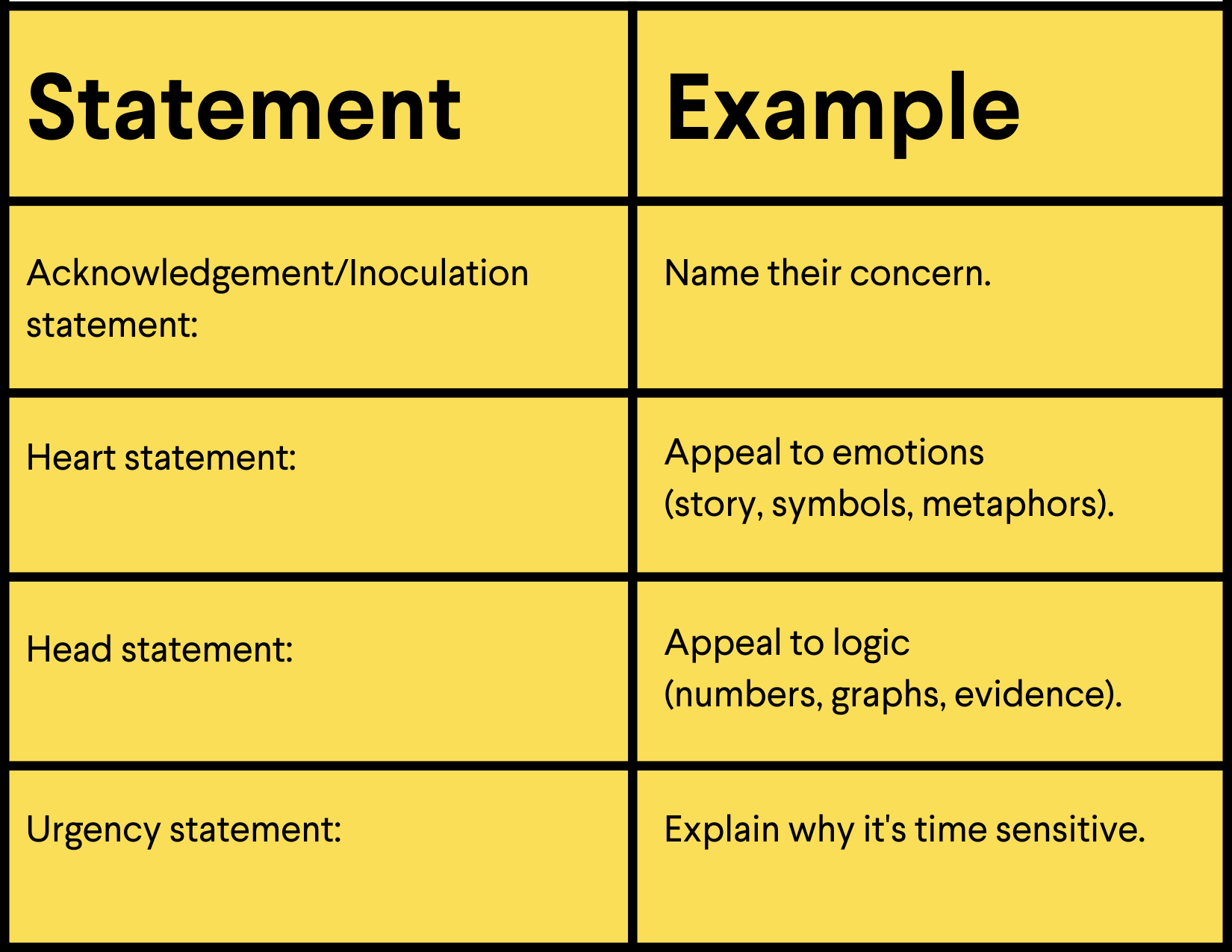How to make change that sticks
7-minute read
We all know that managing change is a critical skill to have as a leader, but what separates the changemakers from the change masters? At LifeLabs, we’ve studied what makes great leaders different.
Here are 6 simple steps you can take to get early buy-in from stakeholders, create change that sticks, and increase your organization's change-readiness, making you a recognized change master in this volatile world.
Step 1: Interview stakeholders and form your rock band
Human brains are wired to process change as loss even if we’re gaining something from it. For example, our brains think that it’s better to not lose $5 than to find $5 on the street. This is why any change agent should be aware of what’s called loss aversion: folks will try to avoid losses even more than acquiring equivalent gains.
Loss aversion means people will resist change. To get ahead of the roadblocks use the LifeLabs CAMPS model to predict stakeholder reactions.
Certainty: What will feel unpredictable for them? And in what ways will this initiative increase certainty and predictability in the long run?
Autonomy: Do options get limited or expanded? Where can you give them a feeling of autonomy and choice within the change?
Meaning: Will they understand why and what matters? How can you help them understand the context for the change?
Progress: Will this slow things down/speed them up? How can you help make things easier by creating small wins and milestones?
Social Inclusion: Will it feel fair to all? Will relationships be impacted? How can you help folks bond around the change?
Once you have an idea of how each stakeholder will react to the change, use your CAMPS analysis to ask better questions when you interview them. Interview stakeholders early-on in the change process to identify potential challenges, concerns, ideas, and solutions. Ask questions like the ones below based on your analysis of the CAMPS model:
Then, form your rock band. Making any change as a party of one is lonely and unnecessarily challenging. With any change initiative, there will always be people who you can count on to get your change across the finish line. Whether it’s because it significantly impacts them, they’re passionate about the topic, or they simply love collaborating, these are the folks you'll want to work with to iterate, create adoption, and make the change a reality.
Step 2: Create a vision statement
Imagine I was making a change to your kitchen layout and this is how I told you:
“Hey, we have to make a change to your whole kitchen layout. Please get on board and let me know if you have any questions.”
What would your reaction be? Mine would be I think not!
People reject change when they don't understand why it's happening. Instead, change masters use frameworks like the one below to make sure that everyone understands the payoff and why now is the time to act.
Here’s the plug and play:
“Hey, I realize that changing the layout of your kitchen can feel pretty disorienting, but we have a huge opportunity right now. Picture yourself cooking in your kitchen and being able to reach all the supplies you need for any meal by only moving a couple steps left or right. Research shows that when we can easily access all of our cooking equipment, we see a 20% increase in enjoyment of the chef and a 50% decrease in cooking time. If we don’t act now, we risk your continued frustration and hours in the kitchen, but if we move fast, you can be a happier chef and spend more time with the people you love most!”
My feeling of Progress and Meaning just spiked because not only will I save time on a daily basis, I’ll get to spend more time being with the people who matter to me!
To increase your odds of getting a quick adoption and long term commitment to any change initiative, use the framework above as early as your first pitch.
Step 3: Simplify it
There’s a psychology term called cognitive load that describes how much effort the brain needs to exert using working memory. Back to kitchens: Do you know the feeling of frustration that comes when you're in a new kitchen and you don't know where anything is? That's the cognitive load of cooking increasing. This is why with any change initiative it’s important to leverage systems that folks already know and use often to reduce the cognitive load.
When making a change, ask yourself, what is something folks already do that you can tether and compare to the new habit? With the kitchen example, I may suggest that the chef learn a new section of the kitchen for every meal they make over the course of the next week. For breakfast, learn where all the pots and pans are. For lunch, get to know your new spice storage. By the end of the week, you’ll be a master at your new kitchen layout!
Step 4: Design early, visible wins
Change takes energy, time, and work, so you want to show people the benefit of the change by embedding small wins throughout the initiative. Picture a progress bar that advances by one point each day--suddenly the change becomes an exciting experiment, where everyone is rooting for the change to achieve the highest success and working together to make it happen.
Pro-tip: Enlist your rock band to give feedback, pilot the intervention, and champion the change. The more voices celebrating your new change the greater the odds that holdouts will make the move into the future.
Step 5: Over communicate
There’s a term used in advertising called effective frequency, coined by Thomas Smith (1885), that describes the number of times someone needs exposure to something before it’s acted upon. Microsoft was interested in the idea that Smith presented, so they conducted a study that supported Smith’s finding: folks need exposure to new information anywhere between 6-20 times before it sticks (1885).
This is why for any change initiative, it’s important to create a strategic communication plan to repeat your message numerous times before, during, and after the change initiative. It’s often a step that gets forgotten, but a real change master knows it’s critical to the success of the change’s sustainability.
Pro tip: Use diversified channels of communication so that your message doesn’t feel monotonous (e.g., Slack, email, all-hands, 1-1s, team meetings).
Step 6: Stay slushy
Old school change experts called the final phase of change the "freeze" phase because it was when the change finally completed. The reality of modern work is that change is never over. That's why instead of "freezing" we say, "Stay slushy!"
You and your employees will experience change, surprise, uncertainty, and ambiguity on a regular basis. There are 3 habits that can help you manage the unknown.
Normalize it: Communicate often that change is something folks should expect as the organization continues to innovate. Acknowledge that it can be frustrating, but nevertheless, necessary for progress.
Give it a name: Name the phase of uncertainty so that employees can more easily talk about it. For example, IDEO labels the feelings of uncertainty in a project “the fog phase.”
Celebrate the slush: Change-masters celebrate slushiness by publicly and privately recognizing others for quickly pivoting to meet new demands, adopting a change to move the needle, or sharing ideas and promptly acting upon them. When change is celebrated, we’re more likely to want to stay slushy.
Pro tip: Embed these habits into the interview process to increase the candidate’s slushiness early on.
That’s it! Those are the 6 steps that change masters take when it comes to implementing change--big or small--at their organization.
If you want more, here's a free resource to have on hand to help you make change stick: Best Practices for Making Change that Sticks.


